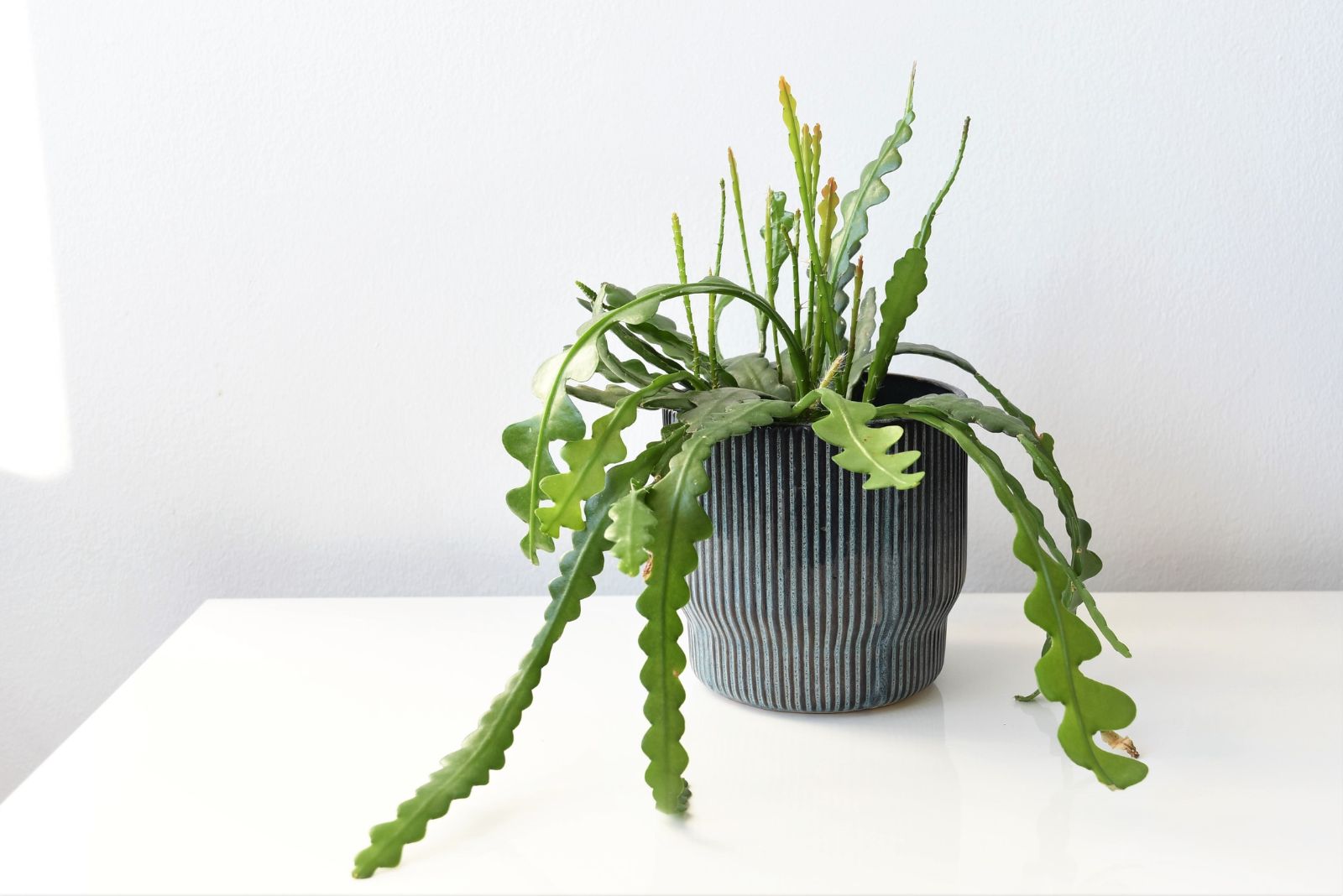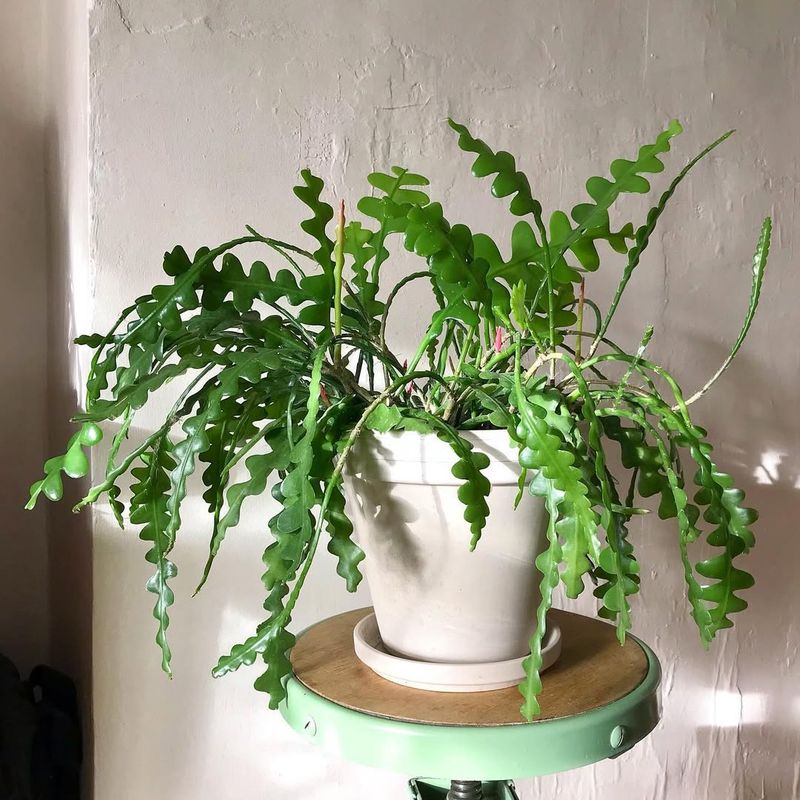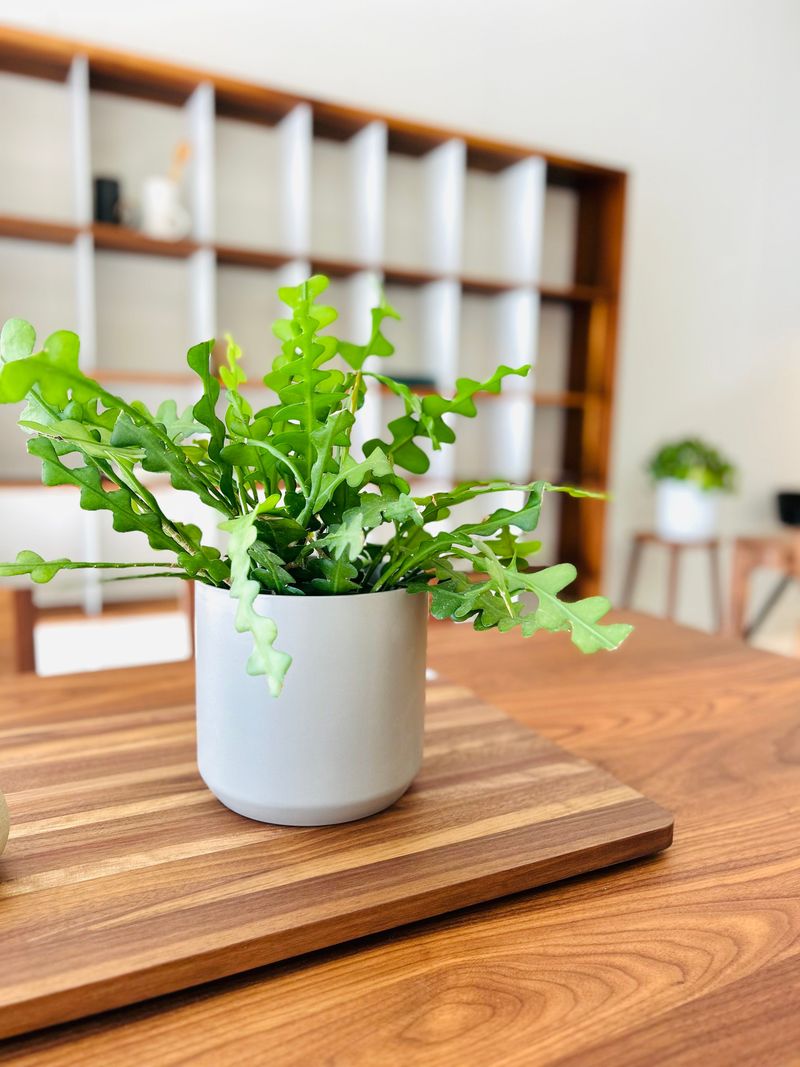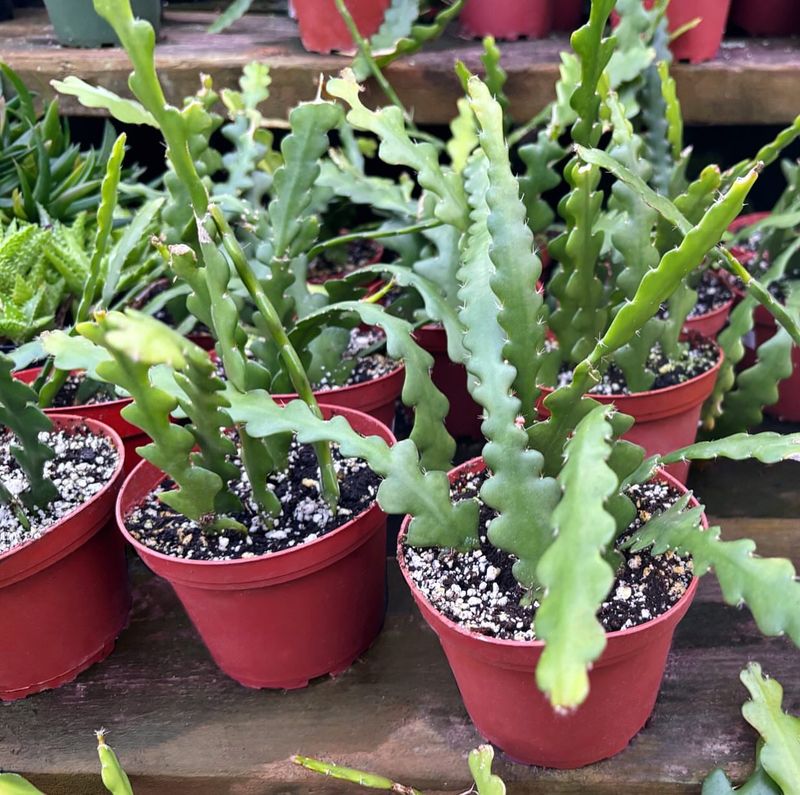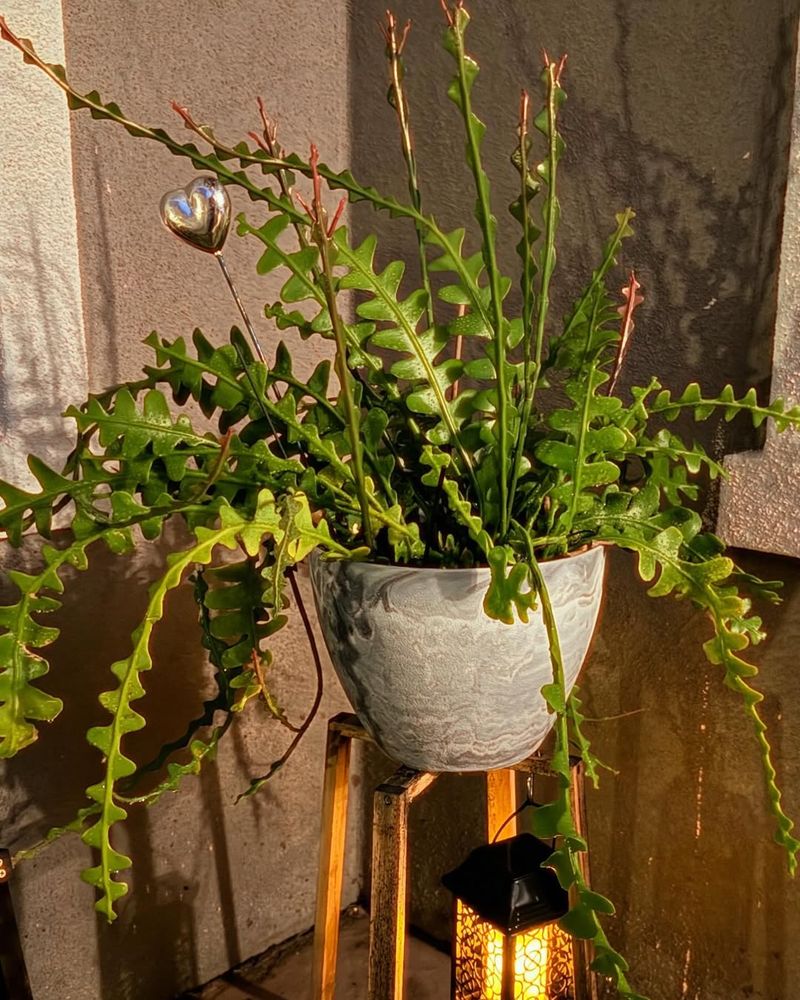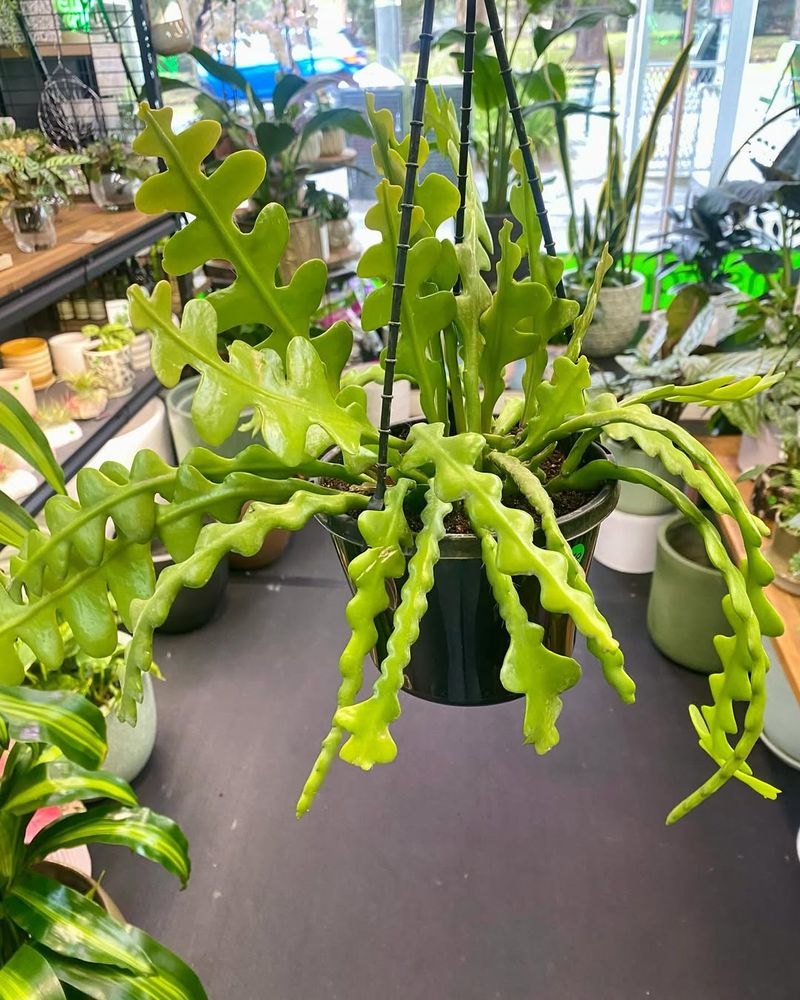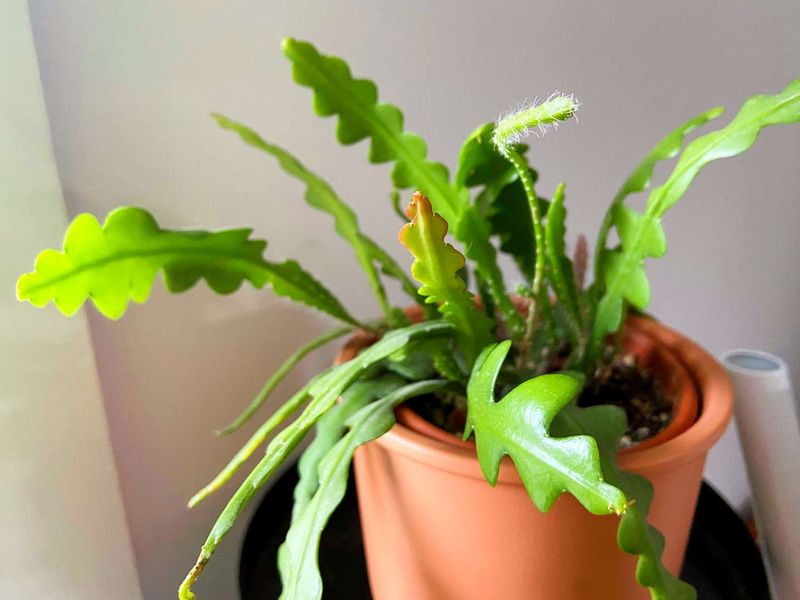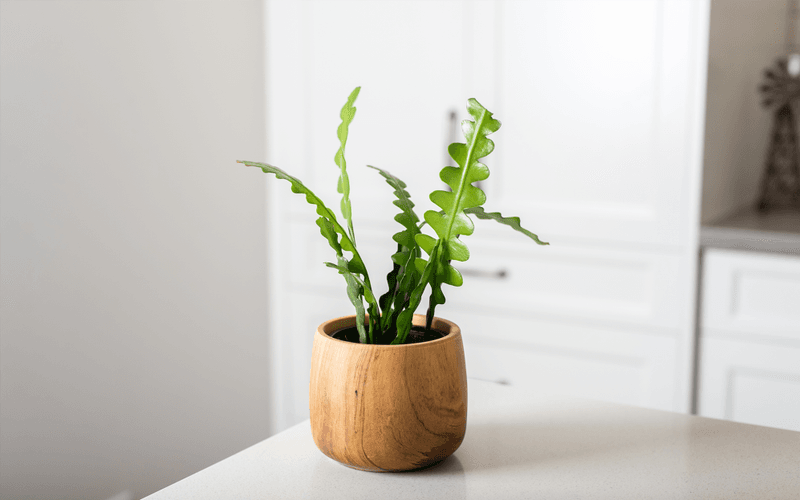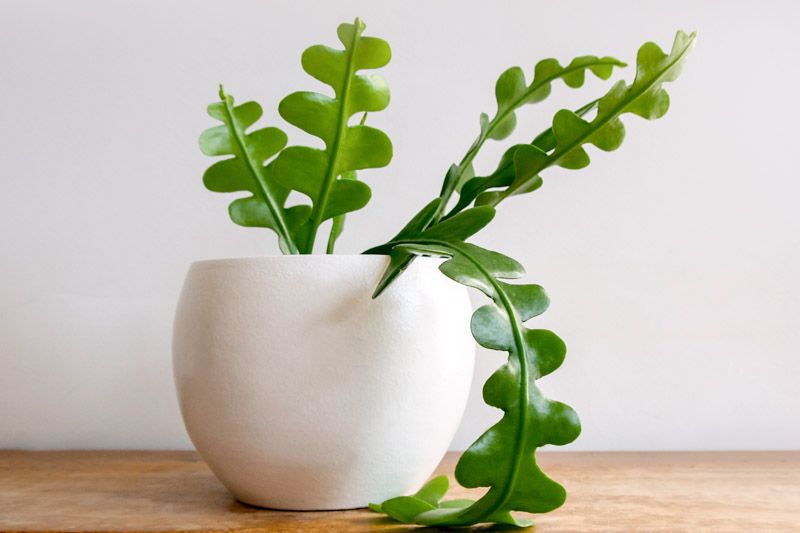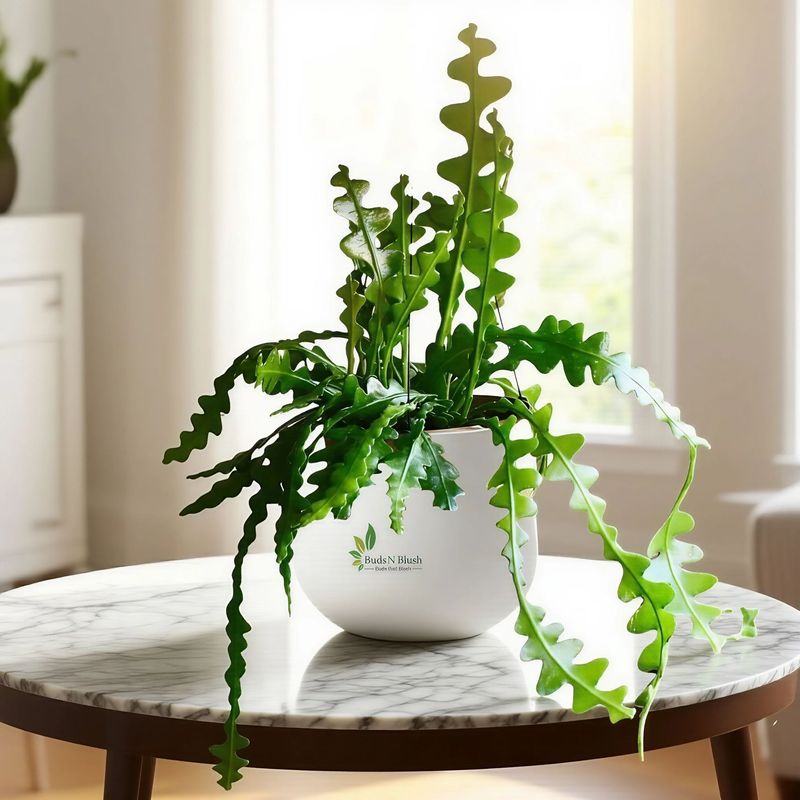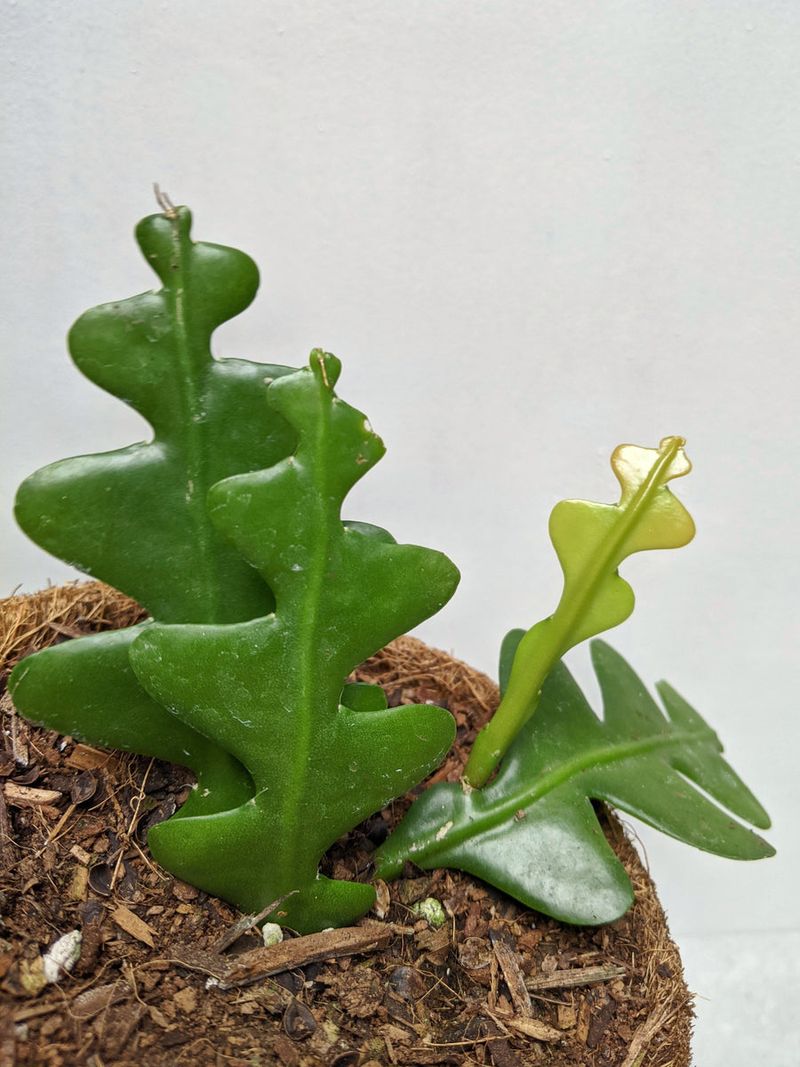I had my fishbone cactus for ages before it finally showed me what it could really do.
I kept waiting for blooms that never came, until I picked up a few simple tricks that changed everything.
Once I dialed in the right light, timing, and a little tough love, those quirky zigzag stems burst into flowers almost overnight.
It felt like watching a shy friend step into the spotlight.
If you’ve been staring at bare stems and wondering when the magic will happen, the right nudge can make your fishbone cactus bloom faster than you think.
1. Give It The Right Amount Of Light
Light makes all the difference when you want blooms.
Your fishbone cactus comes from tropical rainforests where it grows under tree canopies, so it loves bright but filtered light.
Direct sun can actually burn those delicate leaves and stress the plant out.
Place your cactus near an east or west-facing window where it gets a few hours of gentle morning or evening sun.
If you only have south-facing windows, hang a sheer curtain to soften the rays.
You’ll know it’s happy when the leaves stay a vibrant green without any yellowing or browning.
Too much shade is just as bad as too much sun.
If your plant sits in a dark corner, it won’t have enough energy to produce flowers.
The sweet spot is that goldilocks zone where the light is just right.
Watch how your plant responds over a few weeks.
If it starts looking pale or stretching toward the window, move it closer to the light source.
Finding that perfect spot might take some experimenting, but once you do, those blooms will come.
2. Water Wisely During Growth Season
Watering can feel like guessing sometimes, right? Here’s what I’ve learned: fishbone cacti aren’t desert plants, so they need more water than your typical cactus.
During spring and summer when they’re actively growing, the soil should stay slightly moist but never soggy.
Check the top inch of soil with your finger before watering.
If it feels dry, go ahead and water thoroughly until it drains from the bottom.
Empty the saucer afterward because sitting in water causes root rot faster than you’d think.
In fall and winter, cut back on watering since the plant slows down.
This rest period is actually when flower buds start forming, so don’t stress if growth seems to pause.
Less water during cooler months mimics the plant’s natural cycle and signals it to prepare for blooming.
Room temperature water works best since cold water can shock the roots.
Some people collect rainwater or let tap water sit overnight to remove chemicals.
Your plant will thank you with healthier growth and more energy to produce those stunning flowers you’re waiting for.
3. Feed Your Plant Regularly
Think of fertilizer as vitamins for your cactus.
Without proper nutrients, even the healthiest-looking plant won’t have the strength to produce flowers.
Fishbone cacti are surprisingly hungry during their growing season, and a little feeding goes a long way.
Use a balanced liquid fertilizer diluted to half strength every two to three weeks from spring through summer.
Look for something with equal parts nitrogen, phosphorus, and potassium, or choose a formula made for cacti and succulents.
The phosphorus especially helps with flower production.
Stop fertilizing in fall and winter when the plant naturally rests.
Overfeeding during dormancy can actually prevent blooming because the plant focuses on leaf growth instead of flowers.
It’s all about timing and understanding what your plant needs in each season.
Organic options like diluted worm tea or fish emulsion work wonderfully too.
Whatever you choose, always water the soil first before adding fertilizer to avoid burning the roots.
Consistent feeding creates strong, healthy plants that bloom reliably year after year once they’re mature enough.
4. Maintain Proper Temperature Ranges
Temperature swings might seem random, but they’re actually a secret weapon for triggering blooms.
Fishbone cacti need a noticeable difference between day and night temperatures to signal flowering time.
In their natural habitat, cooler nights tell the plant when conditions are perfect for blooming.
During the day, keep your plant in temperatures between 65 and 75 degrees Fahrenheit.
At night, let it drop to around 55 to 60 degrees.
This ten to fifteen degree difference is what kickstarts bud formation in late fall and winter.
Avoid placing your cactus near heating vents, radiators, or air conditioning units that blast hot or cold air directly on it.
Sudden temperature shocks stress the plant and can cause buds to drop before they even open.
Consistency with gentle fluctuation is what you’re aiming for.
If you live somewhere with mild winters, you can even move your plant to a cooler room or enclosed porch for a few weeks.
Just make sure temperatures don’t drop below 50 degrees or you’ll risk damage.
That cool period really does make a difference when bloom time rolls around.
5. Use The Right Potting Mix
Soil matters more than most people realize.
Your fishbone cactus needs a mix that drains quickly while still holding some moisture.
Regular potting soil is way too heavy and keeps the roots too wet, which leads to problems instead of blooms.
Mix your own blend using equal parts potting soil, perlite, and orchid bark.
This combination gives you drainage, aeration, and just enough water retention.
You can also add a bit of compost for extra nutrients that feed your plant naturally over time.
Store-bought cactus mixes work too, but add extra perlite or pumice to lighten them up.
The roots need air circulation to stay healthy and absorb nutrients properly.
When roots are happy, the whole plant thrives and has energy left over for flowering.
Repot every two to three years in fresh mix, preferably in spring before the growing season kicks in.
Choose a pot just one size larger since fishbone cacti actually bloom better when slightly rootbound.
Good soil is like a solid foundation for a house, everything else depends on it working right.
6. Increase Humidity Levels
Dry air can stop your cactus from blooming even when everything else is perfect.
Remember, these plants come from humid jungle environments, not arid deserts.
They appreciate moisture in the air more than you might expect from something called a cactus.
Aim for humidity levels around 50 to 60 percent.
You can achieve this by grouping plants together so they create their own little microclimate.
Placing a shallow tray filled with pebbles and water under the pot works great too, just make sure the pot sits on the pebbles above the water line.
Misting helps temporarily but isn’t a long-term solution since the moisture evaporates quickly.
A small humidifier near your plant collection gives more consistent results, especially during winter when indoor heating dries everything out.
Bathrooms and kitchens naturally have higher humidity if they get enough light for your plant.
You’ll notice the difference in how the leaves look and feel.
Proper humidity keeps them plump and healthy, which means the plant has the vigor it needs to produce flowers.
It’s one of those simple changes that can really transform your plant’s performance.
7. Prune To Encourage Branching
Pruning might feel scary at first, but it’s actually one of the best things you can do.
When you trim your fishbone cactus, it responds by growing new stems from the cut points.
More stems mean more potential spots for flowers to appear, so you’re literally multiplying your chances of getting blooms.
Use clean, sharp scissors or pruning shears to snip stems just above a node where you see small bumps.
These bumps are dormant growth points that will wake up after cutting.
Spring is the ideal time for pruning since the plant is gearing up for active growth anyway.
Don’t go overboard and remove more than a third of the plant at once.
Take a few stems here and there to shape the plant and encourage fuller growth.
Those cuttings can be rooted in soil to make new plants, so nothing goes to waste.
A bushier plant with multiple stems creates a more impressive display when flowers finally appear.
Plus, pruning removes any weak or damaged growth that might be draining energy from the rest of the plant.
It’s like giving your cactus a fresh start and renewed purpose.
8. Provide A Rest Period
Plants need downtime just like we do.
Your fishbone cactus won’t bloom if it’s pushed to grow constantly without a break.
In fall and winter, it naturally wants to rest, and respecting that cycle is crucial for flower production.
Starting in October, gradually reduce watering and stop fertilizing completely.
Move the plant to a slightly cooler spot if possible, but keep the light levels consistent.
This dormancy period allows the plant to redirect energy from making new leaves to forming flower buds instead.
You might worry when growth slows down, but that’s exactly what should happen.
The plant is conserving strength and preparing for the next bloom cycle.
Some people see their fishbone cactus flower in late winter or early spring, which is the reward for giving it proper rest.
Resume regular care in early spring when you notice new growth starting.
The contrast between the rest period and active growing season is what triggers blooming.
Skipping this step is one of the biggest reasons fishbone cacti refuse to flower even when they look perfectly healthy otherwise.
9. Avoid Moving It Around Too Much
Stability matters more than you’d think.
Every time you move your fishbone cactus to a new spot, it has to adjust to different light, temperature, and humidity conditions.
This constant adjustment uses energy that could otherwise go toward making flowers.
Once you find a good location where your plant seems happy, leave it there.
Plants are creatures of habit and bloom best when their environment stays predictable.
Moving them around confuses their internal clock and can cause buds to drop before opening.
Even rotating the pot too often can be disruptive, though turning it occasionally helps growth stay even.
The key is finding balance between giving your plant what it needs and not fussing over it too much.
Sometimes less intervention is actually better.
If you absolutely must move your cactus, do it gradually over several days so it can acclimate.
Watch for signs of stress like drooping stems or bud drop, and adjust accordingly.
Creating a stable, comfortable home for your plant pays off when those gorgeous flowers finally appear and last for weeks instead of days.
10. Be Patient With Young Plants
Here’s something nobody tells you upfront: fishbone cacti need to reach maturity before they’ll bloom.
If your plant is young or recently propagated, it might take two to three years before you see any flowers.
That waiting period can feel endless, but it’s completely normal.
Focus on helping your young plant grow strong and healthy rather than stressing about blooms.
All the care tips above still apply, they’re building a foundation for future flowering.
A well-cared-for plant will bloom more reliably once it reaches the right age and size.
Size matters too.
Fishbone cacti typically need to be at least twelve to eighteen inches long with multiple stems before they have enough energy to produce flowers.
If yours is still small, give it time to fill out its pot and develop a robust root system.
Check the age when you buy or receive a cutting.
Knowing where your plant is in its lifecycle helps set realistic expectations.
When those first buds finally appear after years of care, the wait makes them even more special and rewarding to see.

